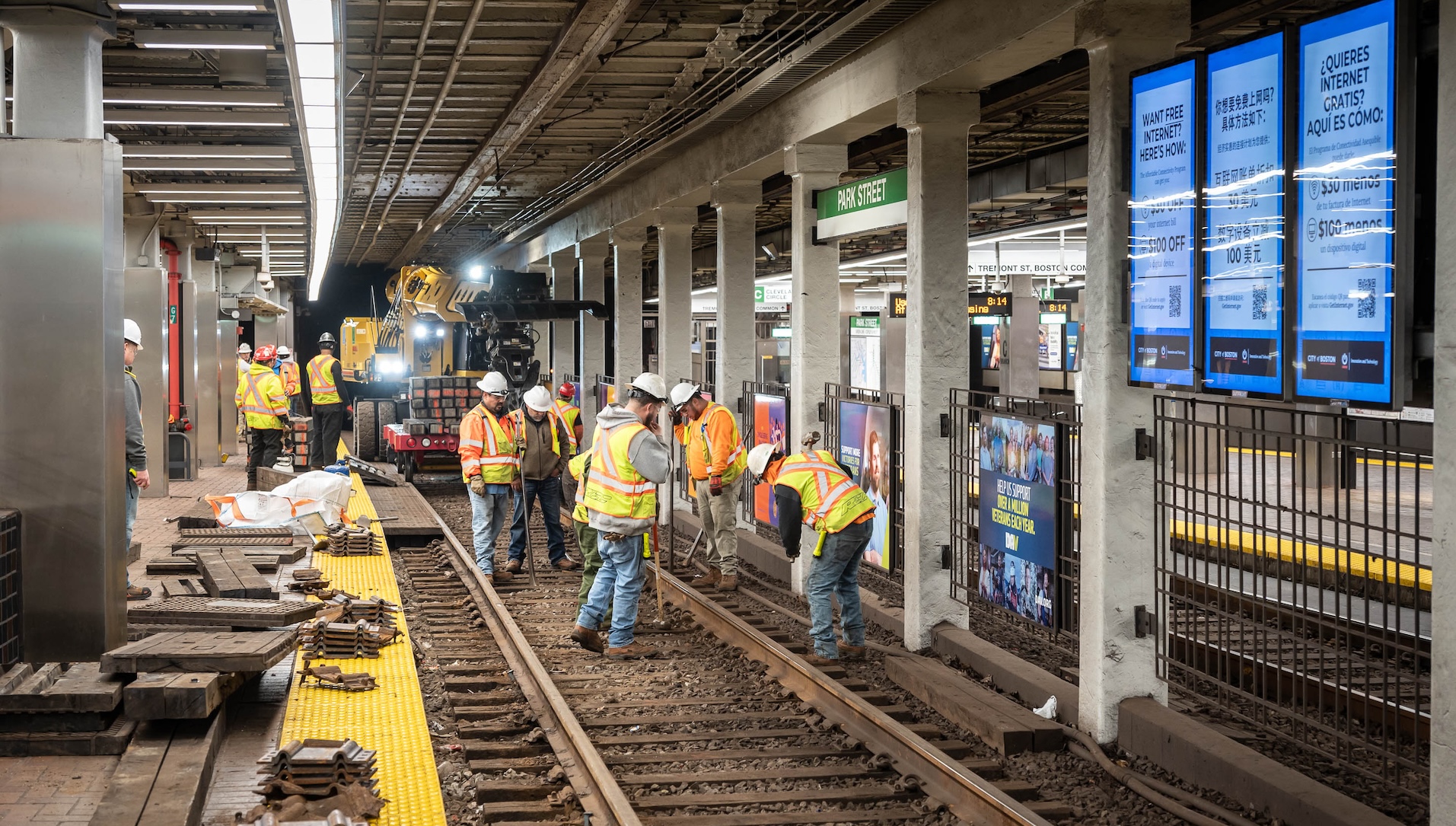Delvin4519
Active Member
- Joined
- Oct 8, 2022
- Messages
- 884
- Reaction score
- 1,536
I'm a bit confused by the implication that there's a three-seat ride. The reliable Kenmore to Sullivan trip has always been a two-seat ride - wait for a GL car that takes you to North or Haymarket (why would one, tho) and then transfer to the OL. If you see something pop-up and make the trip to Park or Gov't - that's always been an option, but, it's not like this is anything new about the system.
Or take any GL car and transfer at Park/DTX, that's also an option.
And it's going to be the same issue and problem with the unfunded BNRD's T7 route.
The T7 in the unfunded bus network redesign (BNRD) is slated to:
1. Provide last mile connections from Sullivan to Haymarket busways connecting with GLX, Blue, Orange, and Red Libes,
2. Provide a crucial north-south connection between North Station and South Station in a OSR, serving Haymarket,
3. Give the Seaport one seat access to the GLX, Red, Orange, and Blue Lines.
4. Run every 11 - 15 minutes off peak (8 min rush hours only)
Bus riders at Kenmore transferring to the Green Line do not have access to the E branch for service to, only the B, C, and D, but most service is truncated at Government Center.
Government Center will NOT be served by the T7 bus, and with the street grid all shredded to pieces at City Hall Plaza, there's no way for the T7 bus to get to it.
This means the main north-south link fron North Station and South Station in Downtown giving last mile riders from Sullivan and the Seaport connections to 3 and a half subway lines won't get easy access to the Green Line's Kenmore busway for continued connections.
Multi-seat rides are only such an issue on the T because of its lousy headways and poor operation controls.
Systems around the world with efficient and predictable operations make multi-seat rides a no penalty activity via coordinated cross-platform transfers. Such a capability is a total fantasy in MBTAland.
The best way to make subway & bus connections really annoying and lousy to deprive ridership is to run the subway and the KBR system on an untimed 11, 13, or 17 minute headway as opposed to
a) evenly spaced single digit headway departures, or.
b) double digit clockfaced 10, 12 or 15 minute headways
--- this could be for example: xx:x6 "every 10 minutes on the 6"
--- xx:01, 13, 25, 37, 49 every hour, or, xx:05, 20, 35, 50, past the hour repeating every hour.
The same goes for lower frequency bus routes (The T loves running 27, 42, 56, and 63 minute headways for buses so no one can remember what time the bus comes or transfer between low freq buses). Why not run 20, 30, or 60 minute clockfaced pulse transfers for local bus routes at bus terminals so riders can connect between low frequency buses and plan for them? Even Brockton here in MA can figure this out.
-----
In my original post, I included a screenshot of the TM dashboard at North Station and the live departures on the GLX.
My outbound GLX train I took that day had a second E train 45 seconds right behind it, followed by an 18 minute gap of service. My train was put on express from East Somerville to Medford and the trip still took 7 minutes (the same had it made all stops), and the following train (it made all GLX stops) came into Medford-Tufts 25 seconds after my expressed train pulled into the platform.
Heading back inbound for the return trip I saw 22 minute headways on the departure board for the opposing direction throughout the GLX stations, followed by 24, 37, and 39. My return train into downtown was then stopped along the Lechmere viaduct with a Union Sq. train directly in front of my train, meaning every single signal required a stop for my train. Then after I got off the Green Line I ran into the aformentioned "OL trains every 10 - 14" on the departure board.
There are constantly 11 - 15 minute headways at North Station, most common during off peak hours, for the Green Line AND the Orange Line (OL weekday rush seems meh/okay). And this is with North Station having both the D and the E and yet the headways are this bad. On June 8th, there were multiple instances of 14 - 20 minute headways despite having TWO branches D and E.
Kinda wild both the outbound and return trip my train was bunched with another train. Either it's bad luck or the problem is actually getting worse. (Links showing March vs. the data for June 8th shows no clear difference at N. Station, but in the case of East Somerville, it seems like it)
Now, with attention on the T7 bus under BNRD. The T7 is also going to have 11 - 15 minute headways... and that darn high frequency bus route from North Station - South Station won't serve Gov'y (with no way to get to it) to pick up the high frequency B and C service to the Kenmore busway. T7 bus riders coming from the Seaport or Sullivan. under BNRD are still going to have to suffer the same garbage headways transfers at Haymarket to get to the B and C at Gov'y since Haymarket/North Station is the only Green Line station the T7 will serve. The Kenmore busway is literally cut off from BNRD's T7 bus.

